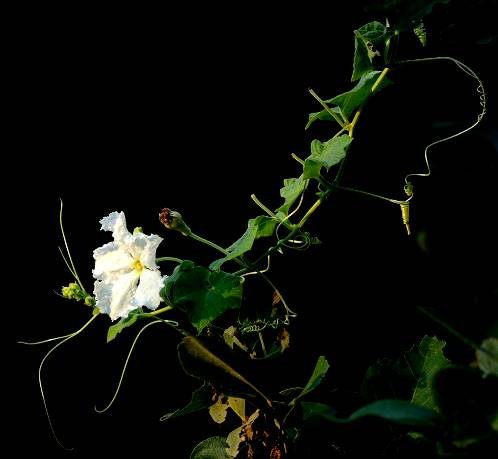Lagenaria siceraria calabash flowers

Author: Ivan Lätti
Photographer: Piet Grobler
Lagenaria siceraria flowers are white, shaped like those of pumpkins. Lagenaria is one of the few genera of the Cucurbitaceae family that bears white flowers; yellow being common. Male and female flowers are borne on the same plant. There is a five-lobed green calyx.
The male flowers grow in a raceme bearing three stamens, the female ones solitary, containing an ellipsoid ovary and three staminodes. Five wedge-shaped petals spread around the small mouth at the top of the tube. The petal lobes have crinkly or crisped margins.
Flowering in South Africa happens mainly during autumn, gourds found until midwinter. The flowers are short-lived, mostly open at night. They are pollinated by hawkmoths and other moths.
The fruit is initially green, becoming pale brown, hard and about hollow when ripe. Little more than the seeds remain in the ripe gourd when everything has dried out. Lagenaria seeds are angular and ridged or winged, quite different from the smooth cucurbit (pumpkin or melon) seeds.
The Lagenaria fruit, the much-used calabash, is highly variable in size and shape, well-known and sought after by people, important as a household commodity in early times. Today, the range of old and new derived calabash products is endless, from storage containers like bottles, eating utensils like cups, bowls and ladles, vases, musical instruments, floats, pipes and ornaments.
The generic name, Lagenaria, is derived from the Latin word lagena meaning flask (Van Wyk and Gericke, 2000; Leistner, (Ed.), 2000; iNaturalist; http://pza.sanbi.org).

